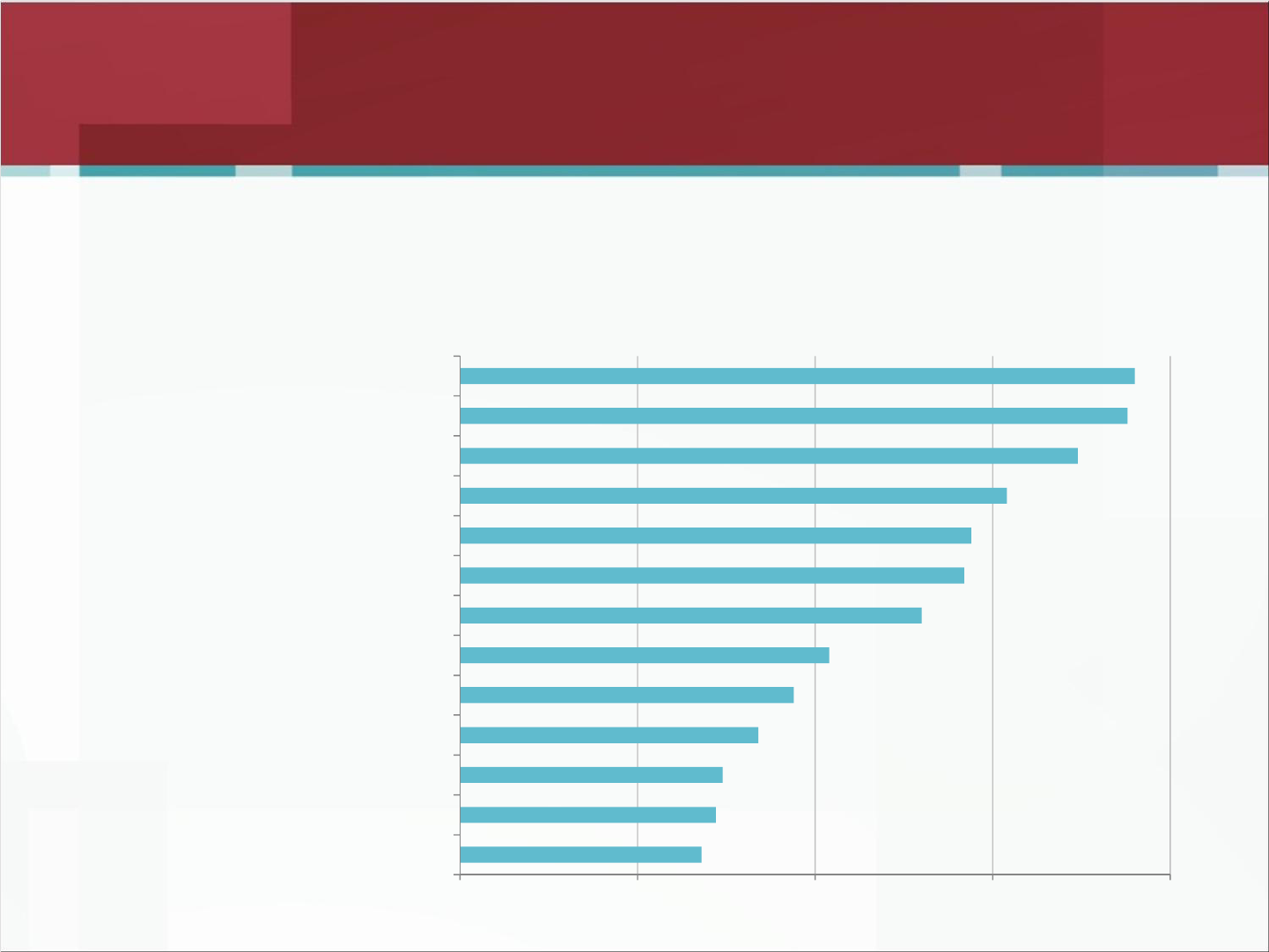
Fiscal union and the need
for accurate
macroeconomic statistics
Guntram Wolff, Bruegel
Luxembourg 26 Jan 2016

Outline
2
The euro area crisis
The new institutional setup
Importance of macroeconomic statistics
Towards fiscal union
Creative fiscal accounting
Heterogeneity of accounting standards in
Europe

Timeline of events
Source: Bruegel based on Datastream
10-year government bond yields (%)
0
5
10
15
20
25
30
35
40
Belgium Germany Ireland Greece Spain France Italy Portugal
QE
Lehman
collapse
Debt
crisis
ESM signed
European Council
announcement on
BU
Speech by
Mario Draghi

Slide 3
1
Instead of using OMT date, please show date of Draghi speech in London. For BU, please show that Eurpean Council announcement "We break
the vicious circle between banks and sovereigns."
Guntram Wolff;
1
sure
Uuriintuya Batsaikhan;

Measuring competitiveness divergence
4
80
85
90
95
100
105
110
115
120
125
130
Germany Ireland Greece Spain
France Italy Belgium Portugal
ULC-based real effective exchange rates (vs. EA18)
Source: ECFIN

Source: Bruegel based on AMECO, Eurostat
-300
-200
-100
0
100
200
300
400
Current account balance (in bn EUR)
Spain Italy Germany France Euro area
Current account statistics

European Stability Mechanism (ESM)
Treaty on Stability, Coordination and Governance in
the Economic and Monetary Union (TSCG)
Sixpack
Banking Union (BU)
OMT programme
5 Presidents’ Report further proposes:
Advisory European Fiscal Board (stage 1)
Euro area stabilization function (stage 2)
Key governance decisions already taken

The new EU fiscal framework puts more
emphasis on the so-called „structural“ deficit
It is computed with GDP and „potential“ GDP
data
Well established empirical finding that GDP
revisions are significant (see real-time
literature, Cimadomo 2011 survey)
Macroeconomic statistics clearly matter for
fiscal policy decision making
Fiscal framework and macroeconomic
statistics
7

Real – time errors in budget procedure.
8

It is part of 6 pack
Significant emphasis on concept of
„competitiveness“
Growing literature on the need to measure
competitiveness with micro-economic data.
Macroeconomic Imbalances Procedure
9

Fiscal Union?
10
Ratio of local to general government expenses in 2013 (%)
Source: IMF, Government Finance Statistics
Note: Federal countries in dark blue.
Fiscal policy is basically national.

Musgrave and Musgrave (1989):
Purpose of budget
• Finance public goods common to all federal states
• Correct geographical and historical disadvantages,
maintain national cohesion
• Smooth business fluctuations
expand or re-orient EU budget?
complement EU and national spending with
spending at different levels (EA, Schengen)?
In EA, case for fiscal stabilization is strongest,
allocation and distribution not primarily EA issues
Fiscal Union: Basics
11

Capital and credit market channel by far the
most important ones
Stabilization channels
12
Source: IMF (2013)

Creation of sizeable federal budget not
realistic given the degree of political and
social integration of the EU…
Need for fiscal policy coordination
• Interaction between monetary and fiscal policies
• Fiscal policy may supplement monetary policy
• Direct cross-border effects of national fiscal policy
Has been unsatisfactory so far (see next
slide)
Stabilization through National Budgets
13

Stabilization through National Budgets
14
Fiscal impulse (% of GDP) and discretionary fiscal policy (% of potential GDP) in EA
Source: AMECO and own calculations
Notes: Crisis: countries under ESM programme; SGP: countries under
corrective or preventive arm

15
0,00
0,25
0,50
0,75
1,00
2011 2012 2013 2014
21 EU
countries
14 Euro-
area
countries
7 Non-euro
area
countries
European Semester Reform Index
Source: Darvas and Leandro (2015)
European Semester and Policy Coordination
Authors also show that implementation of
recommendations not better than in the case of OECD
recommendations

More pressure to reduce the debt ratio in normal and
good times to allow for fiscal stabilization in bad
times
Potential debt restructurings to prevent overly-harsh
austerity and make rules more credible
• Complete Banking Union with incentive to diversify banks’
exposure to sovereign risk
• Deposit guarantee scheme with common fiscal backstop
• ESM as firewall in case of sovereign debt restructuring
Important role of European Fiscal Board
But conundrum of shared sovereignty
remains
National Fiscal Policies
16

Flexibility of SGP rules in bad times (for the
short term)
• European Fiscal Board
• National adjustment accounts
But avoid fuzzy discretion
Need to coordinate a fiscal stance, in
particular at Zero Lower Bound
National Fiscal Policies
17

Fiscal rules aim at constraining government behaviour
To circumvent such rules governments sometimes revert to
creative accounting
Empirical evidence of creative accounting in the EU (von Hagen
and Wolff, 2004):
• SGP rules have induced governments to use stock-flow adjustments to hide
deficits
• Tendency to substitute stock-flow adjustments for budget deficits is strong for the
cyclical component of the deficit (as in times of recession the cost of reducing the
deficit is particularly large)
The amount of creative accounting depends on the reputation cost
for the government and the economic cost of sticking to the rule
Again points to the importance of quality statistics
Creative accounting
18

The closer we get to fiscal union, the more
high quality and harmonized data is needed
• Base for fiscal rules and policy recommendation
• Limit procylicality of current fiscal policy
• Identification of good and bad times
It is about national policies and data
Address circumvention of rules through
creative accounting
Implications for Public Sector Accounting
19

Complex and heterogeneous
• Cash basis vs. accrual accounting?
• Federal systems often exhibit the most complicated systems, as different
federal regions stick to different accounting principles
Accounting systems in Europe
At the central
level
Regional level municipality level Social
insurance
Accrual accounting 12 2 14 13
Modified accrual accounting 5 - 4 4
Combination between accrual
accounting and cash basis
5 1 7 4
Cash basis 4 - - 1
Not applicable - 23 - 1
No answer 1 1 2 4
Total 27 27 27 27
Source: Ernst&Young, European Commission

Conformity to IPSAS?
• A Ernst&Young study reveals how similar accounting systems in the single EU
member states are to the IPSAS
• Result: the conformity ranges from 30% to 90%
Accounting systems in Europe (i)
Source: Ernst&Young, European Commission
0 25 50 75 100
Germany (Cash basis in government sector)
Ireland (central government)
Malta (central government)
The Netherlands (central government)
Italy (central government)
Austria (Federal state)
Belgium (central government)
Denmark (central government)
Finland (central government)
Spanien (government sector)
France (central government)
Sweden (central government)
United Kingdom

Fiscal policy making is at the heart of
European crisis response.
It requires adequate macroeconomic
information
The more „fiscal union“ advances, the more
relevant will be the comparability and
accuracy of national fiscal and
macroeconomic statistics.
Significant evidence of „creative“ accounting
Large heterogeneity of fiscal accounting
approaches in EU
Conclusions
22

Thank you for your attention!
References:
Darvas, Zsolt and Àlvaro Leandro (2015). ‘The limitations of policy coordination in the
euro area under the European Semester’. Bruegel Policy Contribution. 2015/19
IMF (2013). ‘Towards a Fiscal Union for the Euro Area:Technical Background Notes’.
Von Hagen, Jürgen and Guntram B. Wolff (2004). ‘What do deficits tell us about
debt? Empirical Evidence on creative accounting with fiscal rules in the EU’.
Discussion paper No 38/2004. Deutsche Bundesbank.
Guntram.Wolff@bruegel.org
